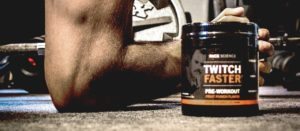Training to play rugby – STAY ON THE FIELD
- Training Team
- Fitness, Injury Prevention, Training
If you want to be a successful rugger, you need to pay your dues in the gym and on the practice pitch. The gym is where you build your fitness, power, and strength, while the practice pitch is the best place to master the basics of rugby.
However, there is another, even more important place you need to spend time if you want to be the best rugby player you can be – the field.
While gym training is important, and you should attend as many practice sessions as you can, the best way to master the sport of rugby is by playing the game of rugby; learn by doing.
Gym training physically prepares you for the demands of rugby but won’t do much for your playing skills. The practice pitch is a safe place to learn the rudiments of the game, but it’s still an artificial environment in which it is all-but-impossible to mirror the demands of competitive rugby.
In contrast, playing against real, unpredictable opposition will teach you far more about rugby than any amount of training.
Every game you play is a learning experience that will help make you a better, more effective player. But, of course, if you want to enjoy this benefit, you need to get as much field time as possible, and that means staying injury-free. After all, if you keep getting crocked, you won’t be able to play, even if you can maintain your fitness in the gym.
Here are FIVE strategies that you need to adopt if you are going to avoid injuries and spend as much time on the field as possible.
1. Never skip your warm-up
A lot of ruggers, especially younger players, think they are too tough to warm-up. Or, if they bother to warm-up at all, make do with a quick jog around the field and a few bouncy hamstring stretches. This is a recipe for injury.
Warming up prepares your muscles and joints for the strenuous activity to follow. Skipping your warm-up increases the risk of injury exponentially. You should also spend time warming up before gym training.
As my coach always used to say to me, if you don’t have time to warm-up, you don’t have time to work out. It’s better to warm-up properly and cut your training session short than it is to skip your warm-up, get hurt, and miss the next few training sessions or games entirely.
A proper warm-up should take no more than 10-20 minutes. If you’re not sure where to start, check out the RAMP method for more on this.
2. Work on your agility
The leading cause of injury in rugby is impact. Whether you are delivering or on the receiving end of a tackle, every hit takes its toll on your body. This is unavoidable when you are in defense, but you should minimize your risk of injury by tackling with good technique. However, when attacking, smart players should look for opportunities to avoid the opposition rather than just charge straight through them.
Yes, barging into the opposition is fun, but it can hurt you as much as it hurts them. If you are a hard-charging rugger who always tries to run over or through those players attempting to stop you, those impacts will add up. Sooner or later, a big hit will leave you injured and unable to play. Remember, time off the field means less real-time playing experience.
If you want a long, successful rugby career, make sure you don’t treat your body like a battering ram. Instead, work on your agility so that you can slip more tackles and reduce your risk of otherwise avoidable injuries.
That doesn’t mean spending hours doing highly choreographed sequences on an agility ladder. Instead, you should focus on your ability to change direction at speed.
3. Do your prehab
When it comes to corrective exercises, a lot of ruggers only do them after the fact. They get injured, can’t train or play, and then spend the next few weeks or months fixing the weakness that led to the injury in the first place. Talk about shutting the gate after the horse has bolted!
If you want to get more time on the field, it makes sense to try and reduce your risk of injury. Being proactive and including prehab exercises in your workout schedule could help eliminate the weak links that are common sources of injury.
This topic is so big and important that we created an entire guide dedicated to helping ruggers reduce their risk of injury with prehab. Not convinced prehab is for you? A study by Bath University, one of the premier sports science centers in the UK, found that prehab, when performed 3+ times per week, has the potential to reduce soft tissue and concussion injuries by as much as 72% in youth players. The results were equally impressive for seniors too.
4. Respect your body’s need for rest and recovery
Ruggers are a tough bunch. That’s hardly surprising as rugby is one of the most full-on sports you can play. Full contact and minimal protective gear mean it takes a special kind of person to face off against 15 similarly determined players week in and week out. Playing and training for rugby are very catabolic activities. That is to say, they cause your body to break down. Even cardio is mildly catabolic.
Think of training as digging a hole. If you train, play, and then train some more, that hole continues to get deeper and deeper. There will come a point where you simply cannot dig down anymore; you’ll hit bedrock. Recovery and rest combined with a healthy diet refill that hole. Ideally, you want to put as much into the hole as you take out. Even better, you should put more into the hole than you take out.
Never underestimate the need for rest and recovery for avoiding injuries. That’s why your training should change from the off-season to the pre-season to in-season. The more competitive rugby you play, the less training you should do.
Once the season is in full swing, use playing rugby to maintain your fitness. Don’t sacrifice playing time by doing more than you need to in the gym or on the practice pitch. Spend your energy wisely! Give rest and recovery the attention they deserve.
Here are 10 programs for post-rugby recovery every player should know.
5. Train smart as well as hard
There is no avoiding the fact that ruggers need to be fit and strong. Time spent in the gym is time well spent. Being strong and fit should prepare your body for the demands of rugby. However, a lot of ruggers train in ways that actually contribute or even cause injuries. They train hard, but they don’t necessarily train smart.
Think of training as an investment: you want to get the biggest return possible for the least amount of effort and risk. After all, training has one purpose – to get you on the field! You aren’t a bodybuilder, and you aren’t a powerlifter, so you should train like it either. Instead, you’re a rugger, and that’s precisely how you should train.
Every exercise, set, and rep you do should have an impact on your playing performance. If, when you analyze your workouts, you cannot see the benefit of what you are going, you probably shouldn’t be doing it.
For example, does your one-repetition maximum in the bench press REALLY matter? Sure, it’ll earn you gym bragging rights, but will hammering your chest, shoulders, and elbows with heavy weights make you a better rugby player? Or are you risking shortening your playing career by increasing your risk of injury? Weighted push-ups are potentially a more beneficial and less risky.
The same is true for interval training. While high-intensity interval training is very popular, it is often unreasonably hard on your body. For ruggers, something like sprint interval training is better. It’s just as useful for increasing fitness, but much less stressful. Read all about sprint interval training here.
SUMMARY
If you want to be a better rugby player, you need to play more rugby. That means avoiding unnecessary injuries and setbacks. Don’t be gung-ho with your health; getting hurt a lot is not a badge of honor. If you’re always injured and miss more matches than you play, you’re either very unlucky or are doing something very wrong.
While there isn’t much you can do about bad luck, you can reduce your risk of unnecessary injuries. If you want to be a better rugger, it’s time to start putting these strategies into action so you can STAY ON THE FIELD!


